P. Bilha Githinji
External Prompt Features Enhanced Parameter-efficient Fine-tuning for Salient Object Detection
Apr 23, 2024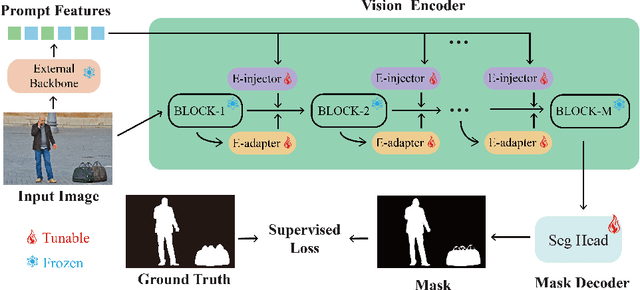
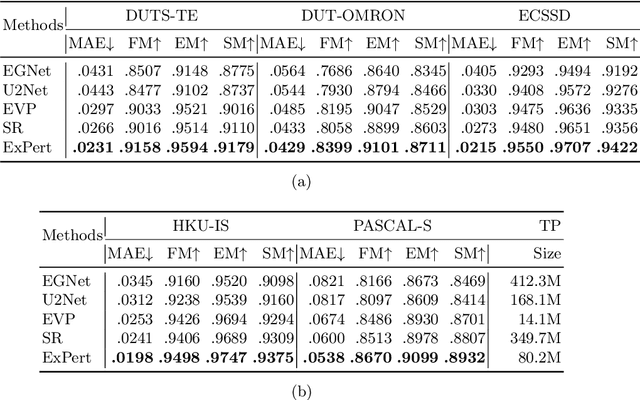
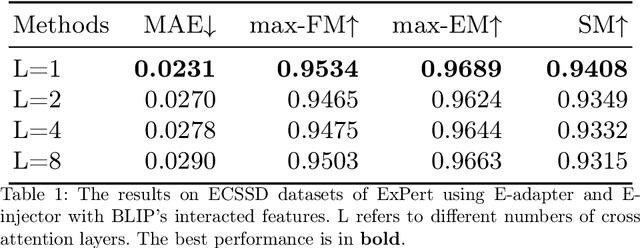
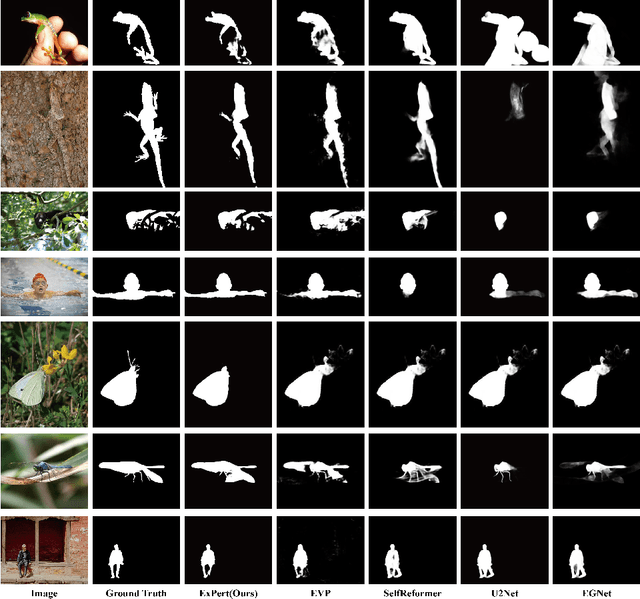
Abstract:Salient object detection (SOD) aims at finding the most salient objects in images and outputs pixel-level binary masks. Transformer-based methods achieve promising performance due to their global semantic understanding, crucial for identifying salient objects. However, these models tend to be large and require numerous training parameters. To better harness the potential of transformers for SOD, we propose a novel parameter-efficient fine-tuning method aimed at reducing the number of training parameters while enhancing the salient object detection capability. Our model, termed EXternal Prompt features Enhanced adapteR Tuning (ExPert), features an encoder-decoder structure with adapters and injectors interspersed between the layers of a frozen transformer encoder. The adapter modules adapt the pre-trained backbone to SOD while the injector modules incorporate external prompt features to enhance the awareness of salient objects. Comprehensive experiments demonstrate the superiority of our method. Surpassing former state-of-the-art (SOTA) models across five SOD datasets, ExPert achieves 0.215 mean absolute error (MAE) in ECSSD dataset with 80.2M trained parameters, 21% better than transformer-based SOTA model and 47% better than CNN-based SOTA model.
Harnessing Intra-group Variations Via a Population-Level Context for Pathology Detection
Mar 04, 2024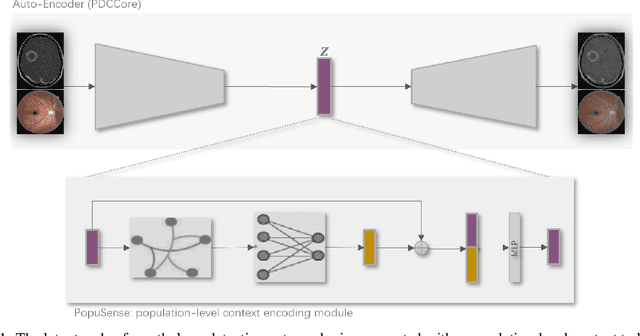
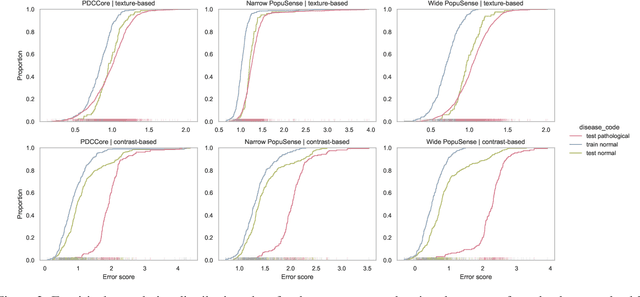

Abstract:Realizing sufficient separability between the distributions of healthy and pathological samples is a critical obstacle for pathology detection convolutional models. Moreover, these models exhibit a bias for contrast-based images, with diminished performance on texture-based medical images. This study introduces the notion of a population-level context for pathology detection and employs a graph theoretic approach to model and incorporate it into the latent code of an autoencoder via a refinement module we term PopuSense. PopuSense seeks to capture additional intra-group variations inherent in biomedical data that a local or global context of the convolutional model might miss or smooth out. Experiments on contrast-based and texture-based images, with minimal adaptation, encounter the existing preference for intensity-based input. Nevertheless, PopuSense demonstrates improved separability in contrast-based images, presenting an additional avenue for refining representations learned by a model.
IRFundusSet: An Integrated Retinal Fundus Dataset with a Harmonized Healthy Label
Feb 27, 2024Abstract:Ocular conditions are a global concern and computational tools utilizing retinal fundus color photographs can aid in routine screening and management. Obtaining comprehensive and sufficiently sized datasets, however, is non-trivial for the intricate retinal fundus, which exhibits heterogeneities within pathologies, in addition to variations from demographics and acquisition. Moreover, retinal fundus datasets in the public space suffer fragmentation in the organization of data and definition of a healthy observation. We present Integrated Retinal Fundus Set (IRFundusSet), a dataset that consolidates, harmonizes and curates several public datasets, facilitating their consumption as a unified whole and with a consistent is_normal label. IRFundusSet comprises a Python package that automates harmonization and avails a dataset object in line with the PyTorch approach. Moreover, images are physically reviewed and a new is_normal label is annotated for a consistent definition of a healthy observation. Ten public datasets are initially considered with a total of 46064 images, of which 25406 are curated for a new is_normal label and 3515 are deemed healthy across the sources.
 Add to Chrome
Add to Chrome Add to Firefox
Add to Firefox Add to Edge
Add to Edge